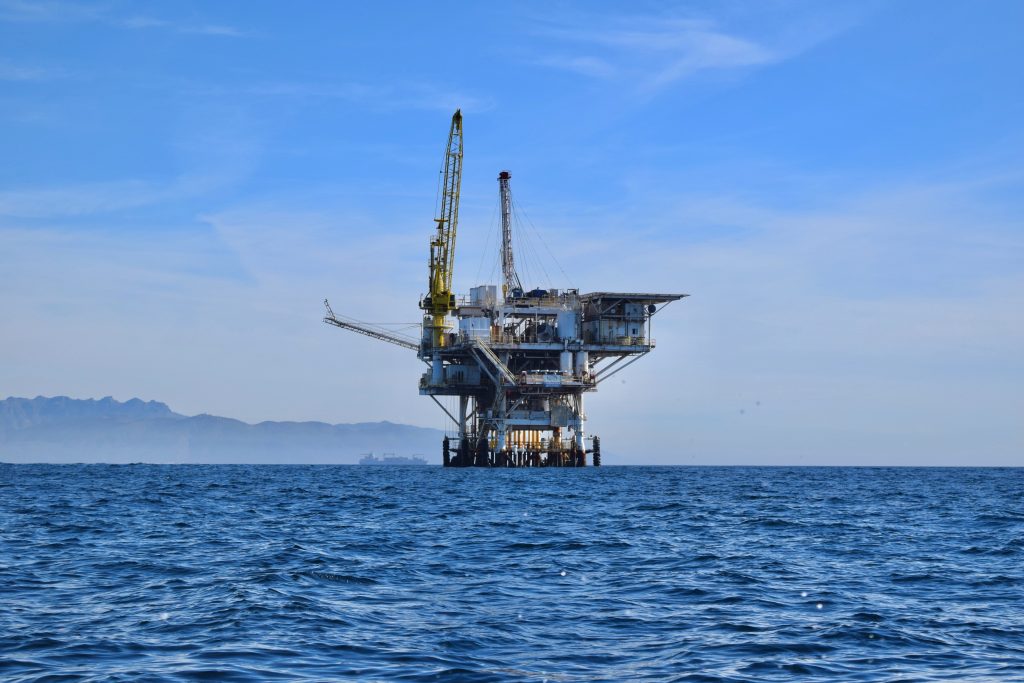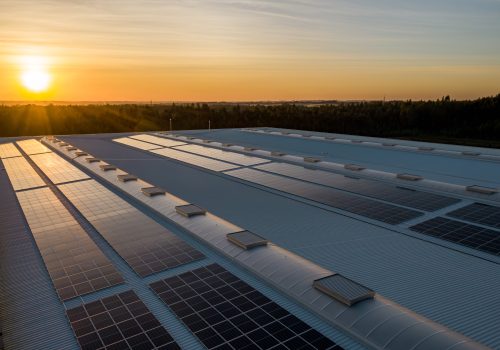The United States’ flagship climate law received—perhaps counterintuitively—a publicly warm reception from the oil and gas industry. Executives lauded the lavish incentives the Inflation Reduction Act (IRA) provides for carbon capture, utilization, and storage (CCUS), zero-emission hydrogen, and even minerals production, activities which some oil and gas majors believe fit their core competencies.
Even so, clean energy accounted for less than 5 percent of the industry’s upstream investments in 2022. Decarbonized energy is dwarfed by dividend payments, which represented 40 percent of total spending in the sector that same year.
Other climate mitigation measures remain necessary to reduce operational emissions. The IRA contains a suite of provisions to help oil and gas move toward scope one and two climate neutrality, potentially comprising some of the law’s most impactful climate measures.
The climate case for scope 1 and 2 net-zero
Reducing scope 1 and 2 emissions—those from production and transport of oil and gas products—is increasingly vital for managing the energy transition. Such emissions contribute more to climate change than all cars worldwide. In certain cases, they are among the lowest-cost and most impactful to abate, and can potentially even reverse future warming.
While not a substitute for investing in clean energy and electrification, decreasing operational emissions from oil and gas provides a tangible climate impact. Globally, eliminating waste emissions can abate roughly 5 gigatons of CO2-equivalent—equal to 60 percent of the world’s transportation emissions.
The United States accounts for 10 percent of emissions from oil and gas operations. Consequently, IRA programs to cut such emissions are a valuable climate tool, alongside the bill’s other provisions to decarbonize and electrify the US economy.
Methane abatement
Some of the easiest emissions to address economy-wide involve oil and gas operations. Chief among these are fugitive methane emissions—leaks from faulty equipment—as well as intentionally vented or incompletely combusted releases of the potent greenhouse gas.
The oil and gas industry is responsible for 20 percent of human-caused methane emissions. Methane produces a warming factor 80 times that of carbon dioxide over a 20-year period. Given its short atmospheric lifespan, reducing methane emissions can actually reverse warming. Coordinated action across the fossil energy, waste, and agriculture sectors could avoid nearly 0.3 degrees Celsius of global temperature increase, a critical buffer to help limit climate change to 1.5 degrees.
The IRA provides $1 billion in financial and technical assistance for reducing methane emissions and establishing a waste emissions charge, the nation’s first tax on greenhouse gas emissions. The charge starts at $900 per metric ton in 2024 and increases to $1,500 from 2026.
The carrot and stick approach to abating methane is merited. The technologies, expertise, and funding to virtually eliminate emissions already exist in the United States. If the country is to remain on track to reach net-zero by 2050, methane emissions from oil and gas must fall by 75 percent. Of those emissions, 80 percent come from upstream production.
Nearly all abatement measures cost less than $20 per ton of carbon dioxide-equivalent to deploy. That investment can yield significant returns, since captured methane is marketable as natural gas.
Numerous exemptions in the IRA limit the scope of the methane fee. However, it provides impetus for operators to dedicate capital expenditure to abatement. This includes the elimination of routine flaring and venting, leak detection and repair, replacement of pneumatic pressure management devices with leakproof ‘no-bleed’ alternatives, and building infrastructure to capture methane and distribute it as natural gas.
Carbon management
IRA investments in engineered carbon removal also position the industry to lower its emissions. But bringing CCUS and direct air capture (DAC) technologies to commercial application is not quite the low-hanging fruit that methane abatement is. Investment in the technology has yielded limited results, with several megaprojects suspended or canceled despite notable successes including the Sleipner Project and Century Plant. In any case, bringing the technology to maturity promises to be resource intensive.
Nevertheless, nearly every climate-neutral framework relies on CCUS and DAC technologies scaling dramatically. The IEA’s net-zero scenario requires the technology to grow to 5 gigatons of CO2 sequestered yearly by 2050, a 125-fold increase in capacity.
The IRA increases the pre-existing credits for CCUS and DAC under Section 45Q of the Internal Revenue Code. The law raises incentives for carbon sequestration from $50 to $85 per ton, for utilization of carbon sourced from DAC from $50 to $130 per ton, and for direct air capture with permanent storage from $50 to $180 per ton. These credits come as the United States is deploying two DAC hubs in Texas and Louisiana.
To date, oil and gas companies have been at the forefront of deploying CCUS technologies, and contribute 90 percent of operational capture and storage capacity. Despite this, oil and gas sector CCUS projects have historically underperformed stated sequestration plans—often by factors as much as 50 percent.
Nevertheless, the sector is currently the primary user of CCUS and is driving the technology’s progress. Fifteen large CCUS gas processing projects currently operate, and additional areas for deployment exist including refining and liquefaction. Implementing these measures should be marketed by officials as a smart business decision. For climate-conscious markets such as Europe, lowering the carbon intensity of exports increases competitiveness. More broadly, this will aid in driving down costs and developing the infrastructure and expertise needed for broad deployment of carbon management technologies.
Low-carbon hydrogen and oilfield electrification
Lastly, the IRA provides investment and production tax credits for dedicated renewable power facilities to electrify upstream equipment like pumps, rigs, and compressors, further reducing operational emissions.
Lowering emissions in refining, which conventionally uses fossil-derived hydrogen as a feedstock, is incentivized through the 45V clean hydrogen production tax credit—which awards up to $3 per kilogram of low-emission hydrogen produced—alongside the 45Q tax credit which supports low-emission hydrogen produced from natural gas with CCUS.
The road to COP28
COP28 in the United Arab Emirates will heavily influence the climate trajectory of the oil and gas industry. The conference will test the sector’s credibility in adjusting to the energy transition, even as energy security concerns seem to throw it a lifeline.
The IRA could help the US oil and gas industry make the case that it is adjusting to a world of rapid clean energy development, electrification, and heightened scrutiny of the fossil fuel sector’s emissions. However, that depends on the industry’s ability to capitalize on IRA incentives for cleaning up operations.
While not a full-fledged climate solution, oil and gas decarbonization is crucial to achieve rapid emissions reductions. Eliminating waste and greening operations can allow the climate mitigation effects of the IRA’s clean energy and electrification program to come into effect sooner.
William Tobin is an assistant director at the Atlantic Council Global Energy Center.
Meet the author
Related content
Learn more about the Global Energy Center

The Global Energy Center develops and promotes pragmatic and nonpartisan policy solutions designed to advance global energy security, enhance economic opportunity, and accelerate pathways to net-zero emissions.
Image: An offshore oil rig. (Zachary Theodore, unsplash, https://unsplash.com/photos/guADzpF9pDI) unsplash lisence: https://unsplash.com/license






